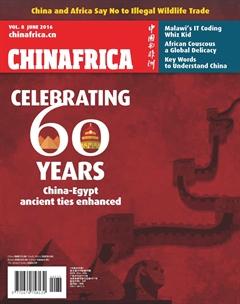Briefs
Growth in FDI, ODI In the first four months, the total value of foreign direct investment (FDI) on the Chinese mainland stood at $45.3 billion, up 4.8 percent year on year. April alone saw FDI worth $9.89 billion, up 6 percent from a year earlier, according to the Ministry of Commerce. The FDI in the service industry rose 7.9 percent to $31.88 billion, accounting for 70.2 percent of the total. The hi-tech service sector attracted $5.13 billion in FDI, a year-on-year increase of 108.6 percent. Chinas non-financial outbound direct investment (ODI) stood at $60.08 billion in the first four months, up 71.8 percent from the same period last year.
Upgrading Consumer Goods Industry China is encouraging an overhaul of its consumer goods industry to meet the needs of domestic buyers. At the State Council executive meeting on May 11, Premier Li Keqiang said people should be provided with goods that meet their needs. The way to achieve this is to pay more attention to details while modernizing industrial equipment and heavy chemicals industries. Li emphasized the need for standards to ensure the quality of consumer goods and upgrade“made-in-China” products. He also said efforts are needed to increase product variety as well as build domestic brands. The meeting asked the government to improve the management system, including strengthening supervision of consumer goods, setting up a blacklist for enterprises dodging regulations, and a punitive compensation system with huge penalties.
Financial Industry Pays Most The annual income of people who work in finance ranked the topmost in China with an average of over 114,000 yuan ($17,500) last year, according to a recent survey by the Chinese National Bureau of Statistics (NBS) of 16 industries nationwide. They are followed by IT workers with a 112,000-yuan ($17,105) honorarium and those working in the science and technology industry with an average earning of 89,400 yuan ($13,654). The survey findings show that the average wage of registered employees rose 7.3 percent from a year earlier to reach 53,615 yuan ($8,200) last year, surpassing 50,000 yuan ($7,600) for the first time. The average wage of employees in urban nonprivate enterprises stood at 62,029 yuan ($9,470) last year, while that of those in urban private enterprises was 39,589 yuan ($6,044).
Resource Tax Reform China will expand reform of resource taxes across the board from July 1, the authorities said. Resource tax will be levied on most mineral products based on price instead of quantity, said a statement jointly issued by the Ministry of Finance and the State Administration of Taxation. Since 2010, China has experimented with taxes based on price instead of quantity in six products- coal, gas, molybdenum, oil, rare earth and tungsten. A pilot on water resource taxation in north Chinas Hebei Province is expected to expand to wood, pasture and tidal flat in the future. The authorities will also cut some fees on minerals to reduce tax burdens. China introduced resource taxes in 1984, mainly targeting businesses in oil, natural gas and coal.
Online Shopping Survey Online shopping in China has expanded more than 12 times over the past five years, a survey shows. The China Academy of New Supply-Side Economics and research company Ant Financial jointly conducted a survey that covered 22 industries and the e-commerce transactions of 450 million Chinese In- ternet users in 337 cities across China. The report also shows differences between male and female consumers, online shopping behavior and buying habits. For example, Chinese women spent more on online shopping than men; they were more likely to buy home supplies while men purchased more products to make them smarter, skillful or provide more enjoyment. In 2015, e-commerce contributed 29.1 percent to the GDP growth.
Tackling Overcapacity Chinas Ministry of Finance said on May 18 that it has created a special fund worth 100 billion yuan ($15.33 billion) to subsidize local governments and state-owned enterprises (SOEs) in reducing steel and coal overcapacity. The ministry said 80 percent of the fund will be distributed to local governments and centrally administered SOEs based on their capacity reduction quota, as well as the number of laid-off workers who have to be resettled.

